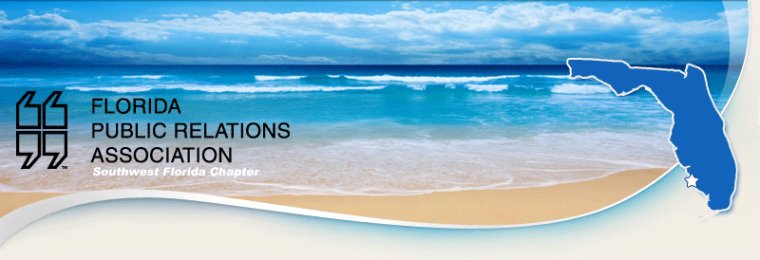President’s Word, April 2010
By Kathleen Taylor, APR
Through flurries of life happenings, I’ve noticed how much of my work hinges on outside connections. It can be tough for independent types to admit it when they’re running their own show, but even if one person is pulling all the strings, someone or something at the other end is moving too. We all rely on these resources to come through both for ourselves and our clients or companies every day. Consider the many ways you are “connected,” and take note of the value FPRA provides its members with its enhanced networking opportunities and resources.
Know the inside scoop: Having access to the latest news provides helpful bits of information, some of which can give you insight into current similar or related situations you may be facing. For example, while stuck in parking-lot style traffic, I checked Facebook and learned the cause of the hold-up, reported by a friend. Being plugged into newsfeeds, Twitter streams and other sources connects you to all types of news. (
FPRA-related example: the
Annual Conference Facebook Fan page, our
chapter Fan page,
Twitter and blog stream are three continuous sources of the latest FPRA news.)
Access to helpful people: You know something I don’t know and likely, vice versa, and we can help each other that way. In today’s social society, we have access to potentially helpful people whom we may not even know yet. I posted to Twitter about my tax refund frustrations and received nearly instant help from a customer service member of Turbo Tax. When we can reach people who can answer questions, we overcome communication barriers and solve problems. Be it Twitter or the telephone, having a channel and knowing the right person to ask saves time and frustration. (
FPRA-related example: Search or post a question using the Twitter hashtag (#) “FPRA” and get answers to your FPRA questions.)
Make miles feel like millimeters: I used to think my mother had eyes in the back of her head. With her seemingly inconceivable intuition, my mother kept my behavior in check whether she was on the other side of the house or across town from my actual location. In reality, she just knew the people who were watching over me, and they would let her know what I was up to. She was connected. Having resources in the community and beyond who can clue you into interesting and relevant happenings can give you an edge on unique opportunities you might not otherwise see by yourself. (
FPRA-related example: By networking with other chapter members, you can learn about partnerships, programs and places where you could participate. Working alongside members in FPRA is an opportunity to forge relationships, which could translate into work referrals in the future!)
Tap into exclusive resources: These days, it seems you need a password to access everything, and some expert resources simply are not free. Different doors open for different people though. If you are connected to those people, you may find your research projects rolling a bit more smoothly. I had a legal question regarding a client’s PR, and an FPRA member helped me find just the resource to explain it all. (
FPRA-related example: Say your client is considering expanding their business to neighboring areas of the state. Or maybe you are job-hunting and are interested in Orlando opportunities. As an FPRA member, you have a state-wide network of resources that can help you get your foot in the door.)
When you are a member of FPRA, you are getting more than discounted registration costs and incredible professional development programs. Your number one membership benefit (with perhaps immeasurable value) is a network of engaged professionals and life-long connections. Learn more about the value of FPRA in this issue of imPRess, and make sure to read the article about annual membership dues; we hope you agree that every dime of your association membership, is a dime well-invested.











